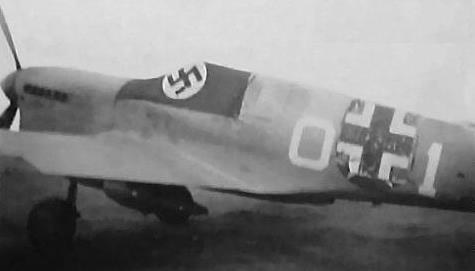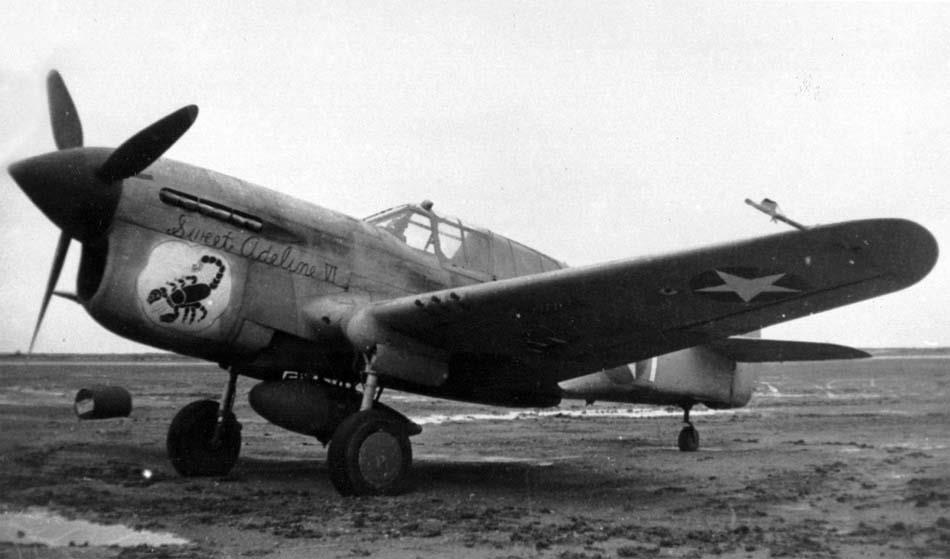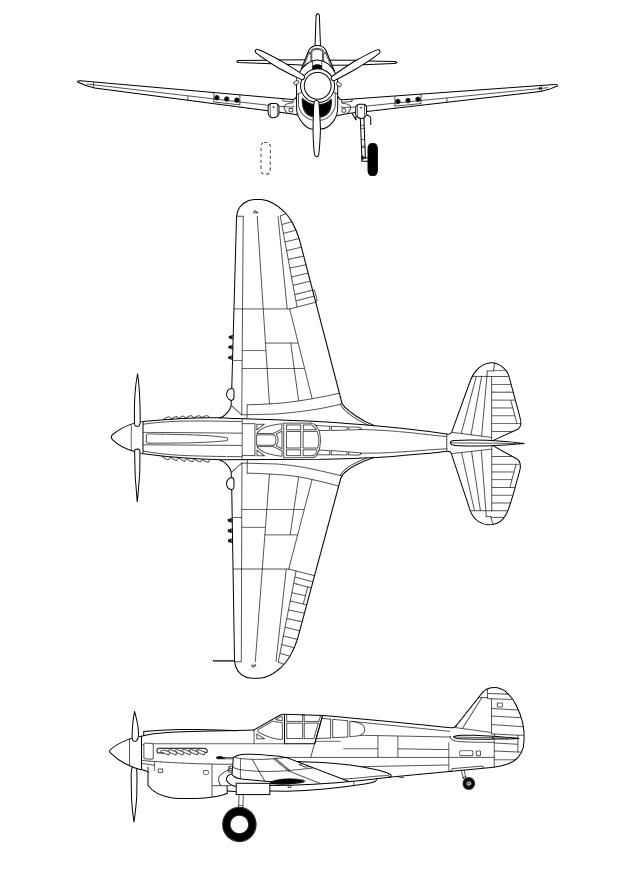| Type |
Single seat fighter |
| Engine |
1 Packard Merlin V-1650-1 |
| Dimensions |
Length 10,17 m , height 3,76 m, span 11,38 m , wing area 21,92 m , |
| Weights |
Empty 2989 kg, loaded 3856 kg, max. take off weight 4241 kg |
| Performance |
Max.. speed 586 km/h , cruising speed 483 km/h , range with PTB 2655 km without 1127 km, endurance , service ceiling 10500 m , climb 602 m/min. |
| Armament |
6 12.7 mm Colt-Browning M-2 machine guns (281 rounds per machine gun) , 3 227 kg bombs
|
| Type |
Werk.Nr |
Registration |
History |
|
|
0+1 |
|
Die Curtiss P-40F müsste in Tunesien erbeutet worden sein. Das Balkenkreuz am Rumpf wurde über den US Stern gemalt. Sie gehörte zur 49th Fighter Group der USAAF und trägt auch noch ihre ursprüngliche Kennung 0-1, d.h. kein Rechliner Erprobungskennzeichen wie vielfach angenommen wird. Über ihr Schicksal ist nichts weiter bekannt, doch ich bezweifle dass sie in den Wirren Ende 1942/Anfang 1943 den Weg auf das europäische Festland gefunden hat.

Back in late 1940, the Curtiss company made an attempt to improve the high-altitude characteristics of its fighter by installing an English Rolls-Royce Merlin 28 engine with a two-speed drive supercharger. In the summer of 1941, this engine was installed on the production P-40D and tested. As a result, the military ordered a series of 1311 vehicles of the new modification P-40F . The production P-40Fs were equipped with V-1650-1 engines - a variant of the famous English Merlin engine, produced in the USA under license by Packard. They had more power than the V-1710-39 - at an altitude of 5638 m, the V-1650-1 developed a power of 1120 hp. With. Externally, the P-40F was distinguished by a slightly modified lower part of the hood and the absence of an air intake above the engine - air entered the carburetor from below.
Production of the P-40F began in January 1942 with the T-1 series. A total of 600 of them were built. The last of the P-40Fs had a small fork to improve directional stability. A little later, on the R-5 series, this problem was finally solved: the rear fuselage was lengthened by 480 mm, moving the fin back relative to the horizontal tail. On the F-10 series, the radiator shutters were electrically driven instead of manual, the F-15 was a “northern” modification for operation in Alaska, the F-20 had a new oxygen system.
330 P40F fighters were allocated to be sent to England through Lend-Lease channels. There they received the designation "Kittyhawk" II. However, 100 vehicles were sent to the Soviet Union, and 80 were returned to the Americans. Almost no English combat squadron flew these machines.
The Americans fought with P-40Fs in the Pacific (the 18th Fighter Group took part in the battles for Guadalcaial Island) and in the Mediterranean. In November, the French GCII/5 Lafayette squadron, which fought in Tunisia and Morocco until December 1943 as part of American formations, was armed with P-40F-1 and P-40F-5 aircraft. On one P-40F, Curtiss experimentally installed a new radiator, moving it far back from under the nose, but this arrangement did not provide any particular advantages.




